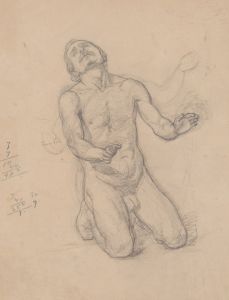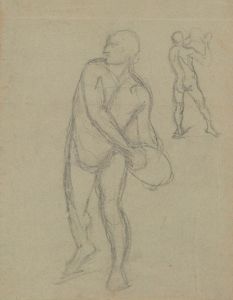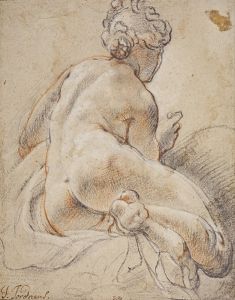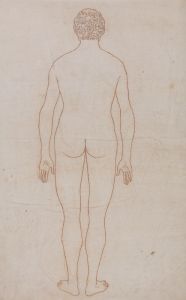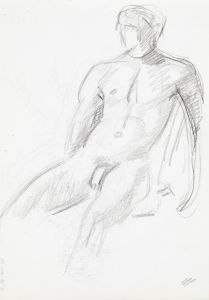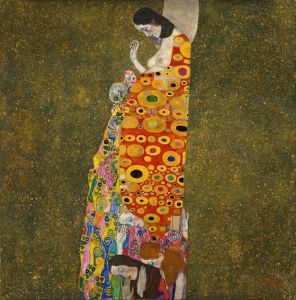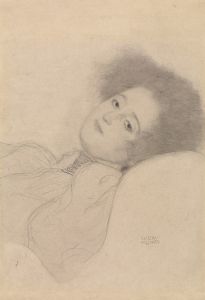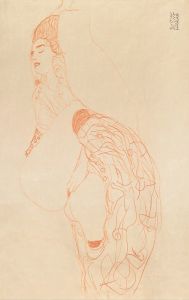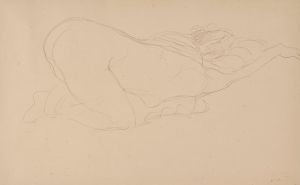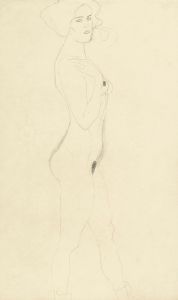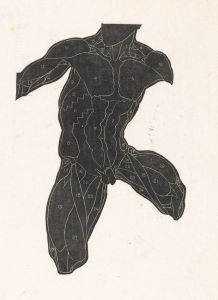
Männlicher Akt ohne Kopf, Hals- und Schulterstudie
A hand-painted replica of Gustav Klimt’s masterpiece Männlicher Akt ohne Kopf, Hals- und Schulterstudie, meticulously crafted by professional artists to capture the true essence of the original. Each piece is created with museum-quality canvas and rare mineral pigments, carefully painted by experienced artists with delicate brushstrokes and rich, layered colors to perfectly recreate the texture of the original artwork. Unlike machine-printed reproductions, this hand-painted version brings the painting to life, infused with the artist’s emotions and skill in every stroke. Whether for personal collection or home decoration, it instantly elevates the artistic atmosphere of any space.
Gustav Klimt, an Austrian symbolist painter, is renowned for his distinctive style and contribution to the Art Nouveau movement. Among his numerous works, "Männlicher Akt ohne Kopf, Hals- und Schulterstudie" is a notable piece that reflects his exploration of the human form and his skill in capturing the nuances of the human body.
"Männlicher Akt ohne Kopf, Hals- und Schulterstudie," which translates to "Male Nude without Head, Neck and Shoulder Study," is a drawing that exemplifies Klimt's interest in the human anatomy and his ability to convey emotion and movement through the depiction of the male form. This work is part of Klimt's extensive collection of studies and sketches, which he often used as preparatory works for his larger paintings. These studies allowed Klimt to experiment with form, composition, and the interplay of light and shadow.
The drawing is characterized by its focus on the male torso, omitting the head, neck, and shoulders, which directs the viewer's attention to the musculature and the subtle play of light across the body's surface. Klimt's technique in this piece involves delicate lines and shading, which create a sense of volume and depth. This approach is typical of Klimt's studies, where he often employed pencil or chalk to achieve a high level of detail and realism.
Klimt's interest in the human body was not merely academic; it was deeply connected to his broader artistic vision, which often explored themes of sensuality, beauty, and the complex interplay between life and death. His portrayal of the human form, whether male or female, was often imbued with a sense of eroticism and psychological depth, challenging the conventions of his time.
The context in which Klimt created "Männlicher Akt ohne Kopf, Hals- und Schulterstudie" is crucial to understanding its significance. During the late 19th and early 20th centuries, Vienna was a hub of artistic and intellectual activity. Klimt was a central figure in the Vienna Secession, a group of artists who sought to break away from traditional academic art and explore new forms and ideas. This environment fostered Klimt's experimental approach and his willingness to push the boundaries of conventional art.
Klimt's studies, including this particular drawing, were not always intended for public display. Instead, they served as a personal exploration of form and technique, providing insight into his creative process. Despite this, many of his studies have been preserved and are now appreciated for their artistic merit and their contribution to understanding Klimt's oeuvre.
In summary, "Männlicher Akt ohne Kopf, Hals- und Schulterstudie" is a testament to Gustav Klimt's mastery of the human form and his innovative approach to art. Through this drawing, Klimt not only showcases his technical skill but also invites viewers to contemplate the beauty and complexity of the human body. This work, like many of Klimt's studies, offers a glimpse into the mind of an artist who was continually pushing the boundaries of artistic expression and exploring the depths of human experience.





